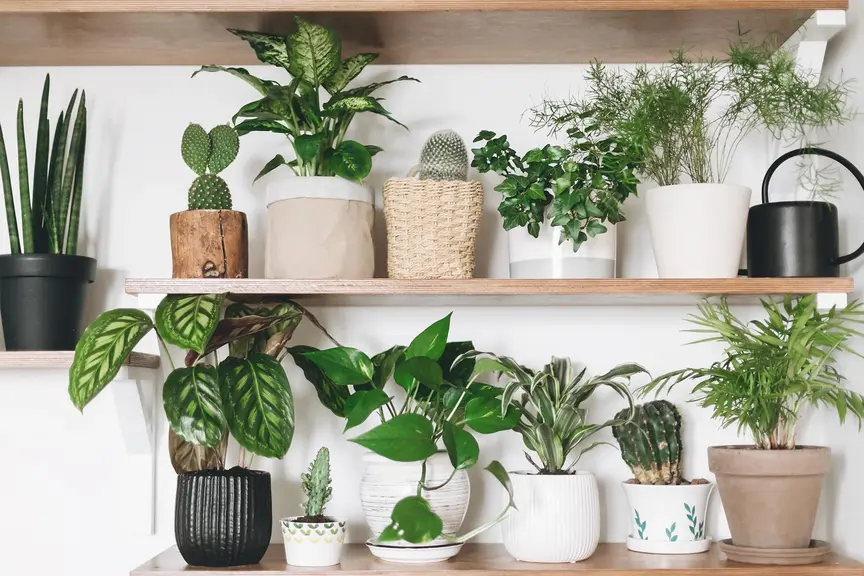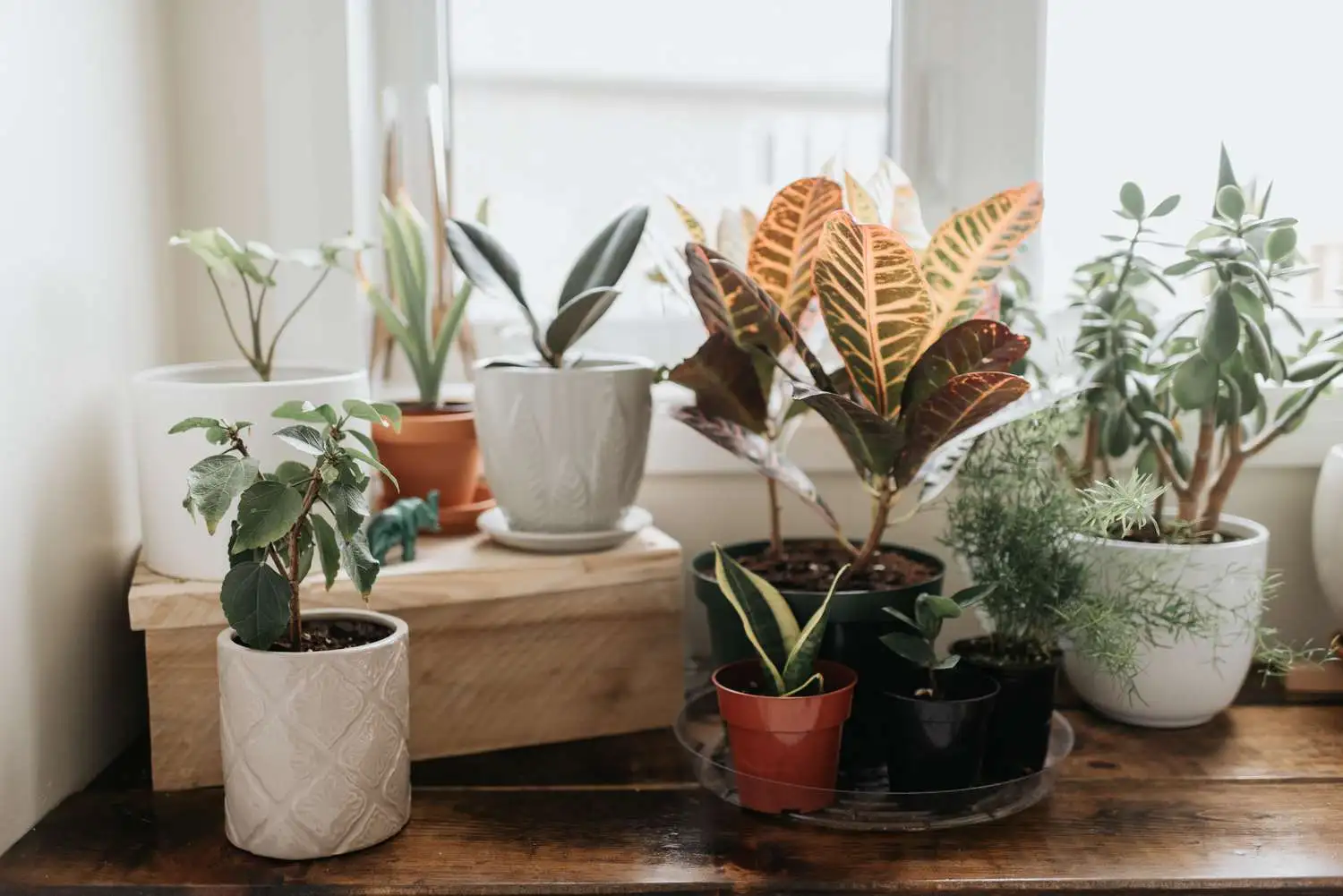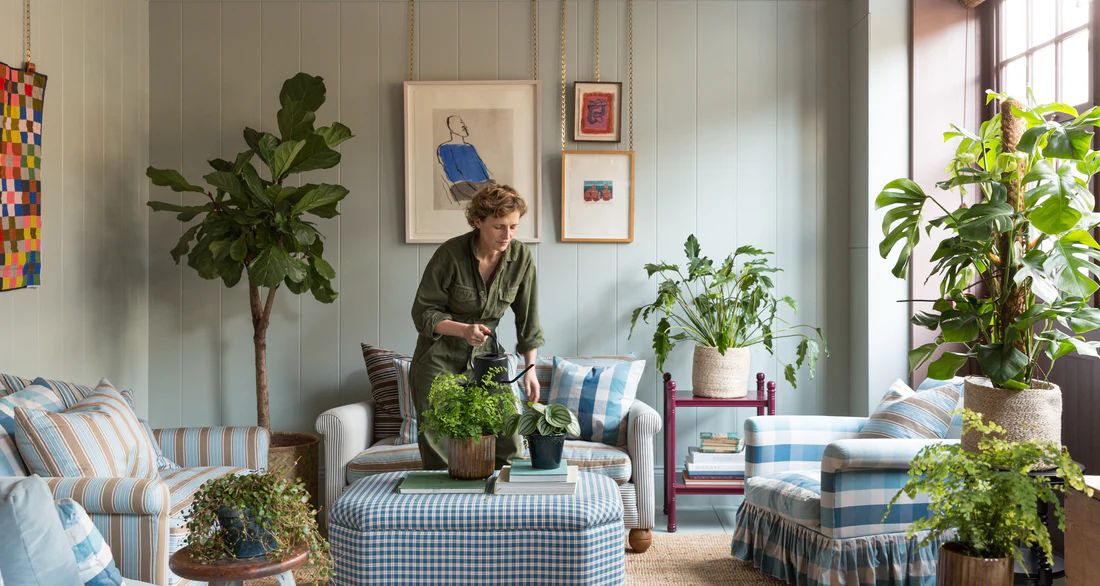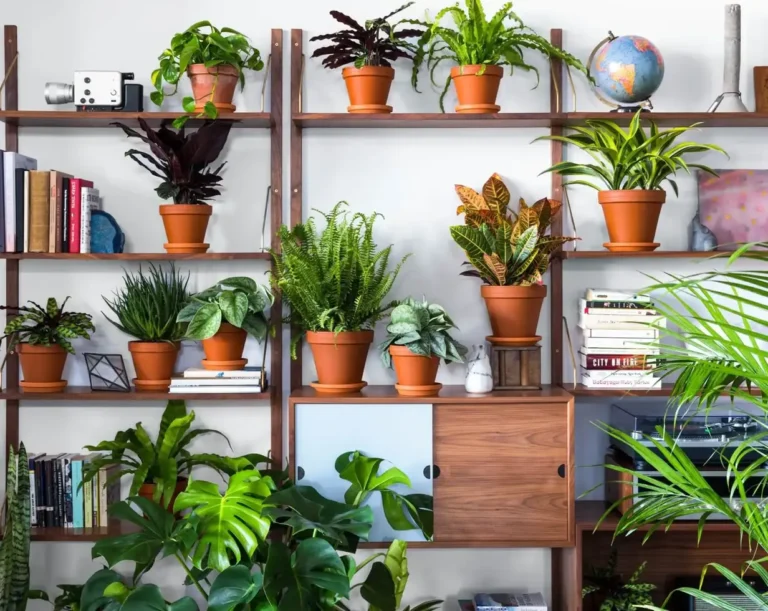Contents
Introduction
Are you looking to bring a touch of nature into your home, but unsure how to mix and match indoor plants for that perfect stylish look? You’re not alone! Indoor plants are more than just decoration—they breathe life into your space, improve air quality, and can even boost your mood. But let’s face it, getting the right combination of plants and arranging them beautifully can feel a bit overwhelming, especially if you’re new to this.
The good news? Creating a chic and cohesive plant display doesn’t have to be complicated. With a little bit of know-how, you can turn your indoor garden into a stunning focal point that complements your home’s style. Whether you’re working with a small apartment, a cozy office, or a spacious living room, the right mix of plants can transform any space into a green oasis.
In this guide, we’ll walk you through everything you need to know about mixing and matching indoor plants. We’ll break it down into easy-to-follow tips and tricks, from understanding different plant types and their care needs to arranging them in a way that makes your home look effortlessly stylish. No fancy jargon, just straightforward advice that will have you feeling like a plant pro in no time.
Ready to dive in and create your own indoor jungle? Let’s get started on making your space greener, fresher, and undeniably stylish!
Understanding Plant Types and Their Needs
Alright, let’s get down to the basics of indoor plants. Before you start mixing and matching, it’s crucial to understand the different types of plants and what they need to thrive. Don’t worry, we’ll keep it simple and jargon-free!
Types of Indoor Plants
First up, let’s talk about the different types of indoor plants you might come across:

- Low-Light Plants: These guys are perfect for rooms that don’t get a lot of sunlight. They’re tough and can handle those shady spots. Think Snake Plants, Pothos, and ZZ Plants. They’re super low-maintenance and still add a lush, green vibe to your space.
- Medium-Light Plants: These plants need a bit more light, but they’re not too picky. They do well in bright, indirect light, like what you’d find near a window with filtered sunlight. Examples include Spider Plants, Philodendrons, and Peace Lilies. They’re great for brightening up spots where the sun doesn’t directly hit.
- High-Light Plants: If you’ve got a sunny spot in your home, these are the plants for you. They love basking in bright, direct light. Succulents, Cacti, and Fiddle Leaf Figs are all about soaking up that sunshine. Just be prepared to give them a bit more attention in terms of watering and care.
Plant Care Requirements
Now that you know what types of plants you’re working with, let’s talk about what they need to stay happy and healthy:
- Watering Needs: Different plants have different watering schedules. Some like to stay on the drier side (like Succulents), while others need regular watering (like Peace Lilies). Pay attention to your plant’s specific needs to keep them looking their best.
- Soil and Potting Requirements: Not all soil is created equal. Some plants need well-draining soil to prevent root rot (think Cacti and Succulents), while others prefer a bit more moisture retention. Make sure you’re using the right soil for each type of plant, and don’t forget to pick the right pot with drainage holes!
- Temperature and Humidity: Most indoor plants thrive in temperatures between 60-75°F (15-24°C). They also appreciate a bit of humidity, especially if you live in a dry climate. You can keep them happy by occasionally misting them or placing a small humidifier nearby.
Understanding these basics will set you up for success as you start mixing and matching plants. With the right knowledge, you can create a beautiful and thriving indoor garden that’s both stylish and easy to maintain. Ready to put your new plant knowledge to use? Let’s move on to creating a cohesive and stunning plant display!
Creating a Cohesive Plant Display
Alright, now that you’ve got the lowdown on the types of indoor plants and their needs, it’s time to get into the fun part—designing your plant display! This is where you can really let your creativity shine and make your space look amazing. Let’s break down how to create a cohesive and stylish plant setup, step by step.

Design Principles
First things first, let’s talk about some basic design principles to make sure your plant display looks balanced and polished:
- Balance: Think of balance as making sure your plant arrangement feels even and not too heavy on one side. You don’t want all your tall plants stacked on one end while the other side is empty. Spread out different plant heights and sizes to achieve a well-balanced look.
- Contrast: Contrast is all about mixing things up to keep the display interesting. Combine plants with different textures and colors. For example, pair a glossy-leaved plant with one that has a more matte or fuzzy texture. Playing with contrasts makes your plant display pop and adds visual interest.
- Proportion: Proportion means making sure your plants are the right size for their space. Big, bold plants can be great as focal points, but make sure they don’t overwhelm smaller plants or the room itself. Think about the scale of your plants in relation to your furniture and the overall room size.
Color Schemes
Now let’s dive into color schemes. Choosing the right colors can make or break your plant display:
- Monochromatic: If you love a clean, unified look, go for a monochromatic color scheme. This means sticking to different shades of the same color. For instance, various shades of green can create a serene and cohesive feel.
- Complementary Colors: For a bit more excitement, try complementary colors. These are colors that are opposite each other on the color wheel, like blue and orange. Using complementary colors can make your plant display really stand out and look vibrant.
- Neutral Tones: If you prefer a more laid-back vibe, neutral tones like greens, whites, and earth tones are your friends. These colors blend well with most interiors and create a calming atmosphere.
Plant Pairings
Finally, let’s talk about how to pair your plants for the most stylish look:
- Texture Combinations: Mix and match plants with different textures. Pair a plant with smooth, glossy leaves with one that has a more rugged or spiky appearance. This variety in textures adds depth and interest to your display.
- Size Variations: Combine plants of different heights and sizes to create a dynamic and visually pleasing arrangement. Tall plants can be great as a backdrop, while smaller plants can fill in gaps and add detail.
- Shape Diversity: Integrate plants with various leaf shapes and forms. A mix of round, oval, and spiky leaves can make your display more engaging and visually appealing.
With these tips in hand, you’re ready to create a plant display that’s not only stylish but also harmonious and inviting. Experiment with different combinations and arrangements to find what looks best in your space. Ready to arrange your plants and make your indoor garden the star of your home? Let’s move on to the best placement strategies!
Placement and Arrangement Strategies
Now that you’ve got a handle on design principles, color schemes, and plant pairings, it’s time to dive into where and how to place your plants. The right placement can make a huge difference in how your plant display looks and feels. Here’s how to get it just right.

Vertical Spaces
Let’s start with vertical spaces, which are great for maximizing your plant display if you’re working with limited floor space:
- Wall-Mounted Planters: If you’ve got bare walls, consider using wall-mounted planters. These can be shelves, hanging pots, or even wall pockets. They’re perfect for adding greenery without taking up floor space and can create a stunning vertical garden.
- Shelving Units: Shelves are a fantastic way to arrange plants at different heights and create layers of green. You can use floating shelves, bookcases, or dedicated plant stands to showcase your collection. Arrange plants in a way that gives each one its moment in the spotlight while also creating a cohesive look.
Table and Floor Displays
For more substantial plant displays, the table and floor areas are key:
- Grouping Plants: Create visual interest by grouping plants together on tables, plant stands, or trays. This can make a big impact, especially if you mix plants of different heights and sizes. You can also use trays or decorative pots to keep the grouping looking tidy and intentional.
- Single Statement Plants: Sometimes, a single, impressive plant can make a powerful statement. A tall, dramatic plant like a Fiddle Leaf Fig or a large Bird of Paradise can act as a focal point in a room. Place it in a prominent spot where it can draw attention and complement the rest of your decor.
Window Sills and Ledges
If you have window sills or ledges, these can be perfect spots for plants that love bright, indirect light:
- Light Considerations: Choose plants that thrive in the type of light your window offers. For sunny windows, succulents and cacti are great. For less direct light, opt for plants like Spider Plants or Pothos. Be mindful of how the sunlight changes throughout the day and adjust your plant placement accordingly.
- Maximizing Space: Window sills are often narrow, so pick plants that don’t require a lot of room. Small, compact plants work well here. You can also use small plant pots or hanging planters to make the most of the space.
With these placement strategies, you’ll be able to make the most of your indoor space, whether you’re working with a tiny apartment or a spacious home. Experiment with different arrangements and placements to see what looks best and brings the most joy to your space. Ready to add the finishing touches? Let’s talk about complementing your plant display with decor and accessories next!
Complementary Decor and Accessories
Now that you’ve got your plants in place and arranged beautifully, it’s time to think about the finishing touches. Complementary decor and accessories can elevate your plant display and make your indoor garden look even more polished and put-together. Let’s explore some ways to enhance your plant setup.
Pot Selection
Choosing the right pots is key to making your plants look their best and fit seamlessly into your home decor:
- Material Choices: The material of your pots can greatly influence the look of your plant display. Ceramic pots offer a classic, elegant touch and come in various colors and patterns. Terracotta pots provide a rustic, earthy feel, while plastic pots are lightweight and come in many styles. Metal pots add a modern edge. Choose materials that match or complement your room’s decor.
- Style Options: Pots come in all kinds of styles. You might prefer sleek, minimalist designs, or you could opt for pots with intricate patterns and textures. Modern pots can have clean lines and bold colors, while vintage or boho styles might feature colorful patterns and unique shapes. Pick styles that reflect your personal taste and the overall aesthetic of your room.
Plant Stands and Holders
Plant stands and holders are not just functional; they can also add a stylish element to your plant display:
- Types of Stands: From pedestal stands to tiered racks, there’s a stand for every type of plant display. Pedestal stands are great for showcasing a single plant, while tiered racks allow you to display multiple plants in a compact area. Hanging planters can add a floating effect, which is perfect for small spaces.
- Enhancing Aesthetics: Choose plant stands and holders that match your room’s decor. For a modern look, go for sleek, metal stands. For a more rustic feel, wooden stands or woven baskets might be the way to go. The right stand can complement your plants and tie your whole look together.
Decorative Elements
Adding decorative elements can give your plant display an extra touch of personality and charm:
- Pebbles and Stones: Placing pebbles or stones on top of your plant soil can enhance the appearance of your pots. They add a clean, finished look and can help with moisture retention. Choose stones that match your decor or go for something that adds a pop of contrast.
- Plant Care Accessories: A stylish watering can, a sleek misting bottle, or a decorative humidity tray can double as functional decor. These accessories not only help keep your plants healthy but also add to the visual appeal of your plant display. Pick accessories that fit your style and make plant care a little more enjoyable.
With these complementary decor and accessory tips, you’ll be able to take your indoor plant display from great to stunning. Adding these finishing touches will make your space feel complete and showcase your plants in the best possible light. Ready to make your plant display shine? Let’s dive into maintaining your beautiful indoor garden next!
Maintaining Your Indoor Plant Display
Congratulations on setting up your stylish indoor plant display! Now that your plants are in place and looking great, it’s important to keep them healthy and thriving. Regular maintenance will ensure that your indoor garden stays vibrant and beautiful. Here’s how to keep your plants in top shape with minimal effort.
Regular Care Routines
Maintaining your plants is all about keeping up with their basic needs:
- Watering Schedule: Different plants have different watering needs. Some like their soil to dry out between waterings (like succulents), while others need consistently moist soil (like peace lilies). To keep your plants happy, get familiar with their specific watering requirements. A general rule of thumb is to check the soil moisture before watering—if it’s dry a couple of inches down, it’s time to water.
- Pruning and Cleaning: Regular pruning helps keep your plants looking their best and encourages healthy growth. Trim off any dead or yellowing leaves to prevent pests and diseases. Additionally, dust can accumulate on leaves, so gently wipe them with a damp cloth to keep them clean and able to photosynthesize efficiently.
Seasonal Adjustments
As the seasons change, your plants might need a little extra attention:
- Temperature Changes: Plants can be sensitive to temperature shifts. In winter, keep plants away from cold drafts and heaters, which can cause stress. During summer, ensure they’re not exposed to excessive heat. Adjust the placement of your plants to keep them comfortable as the seasons change.
- Light Modifications: Natural light levels can vary with the seasons. In winter, you might need to move plants closer to windows to get more light, while in summer, some plants might need protection from harsh midday sun. Keep an eye on your plants and adjust their positions as needed to ensure they get the right amount of light.
Addressing Plant Health Issues
Sometimes, despite your best efforts, plants can face health issues. Here’s how to tackle common problems:
- Pest Control: Indoor plants can attract pests like spider mites, aphids, or mealybugs. Check your plants regularly for signs of pests such as webbing, sticky residue, or visible bugs. If you spot any, treat them promptly with insecticidal soap, neem oil, or by wiping them off with a damp cloth.
- Disease Management: Plants can also suffer from diseases like fungal infections or root rot. Look out for symptoms such as discolored leaves, wilting, or mold. If you suspect a disease, isolate the affected plant and treat it with appropriate remedies, which might include adjusting watering habits or using fungicides.
By staying on top of these maintenance tasks, you’ll ensure your indoor plants remain healthy and beautiful. Regular care not only helps your plants thrive but also keeps your indoor garden looking fresh and inviting. With a bit of attention and love, your plants will continue to enhance your home for years to come. Ready to keep your plant display in tip-top shape? Let’s wrap up with some final tips and inspiration!
Conclusion
You’ve made it to the end of our guide on mixing and matching indoor plants for a stylish look! By now, you should feel confident in creating a vibrant and cohesive indoor garden that enhances your home. Let’s recap what we’ve covered and inspire you to put your newfound knowledge into action.
Summary
We started with the basics, exploring different types of indoor plants and their care needs. From low-light lovers to sun-seekers, understanding these requirements helps you choose the right plants for your space. Next, we delved into creating a cohesive plant display, focusing on design principles, color schemes, and plant pairings. With these tips, you can mix and match plants to achieve a balanced, eye-catching look.
We also covered placement strategies to make the most of your space, whether it’s utilizing vertical areas, tables, or window sills. And don’t forget the importance of complementary decor and accessories! From selecting stylish pots and stands to adding decorative elements, these touches can elevate your plant display and make it truly unique.
Encouragement
Now that you’ve got all the tools to design and maintain a stunning indoor plant setup, it’s time to get creative. Don’t be afraid to experiment with different plant combinations, arrangements, and accessories. Your indoor garden is a reflection of your personal style, so let your creativity shine and make it your own.
Further Resources
If you’re eager to learn more, there are plenty of resources out there to deepen your plant knowledge. Consider checking out gardening blogs, plant care books, or even joining local plant enthusiast groups. Whether you’re looking for advanced care tips or just want to explore more plant varieties, there’s a whole world of green out there waiting for you.
With these insights and a bit of passion, you’re well on your way to creating a lush, stylish indoor oasis. Enjoy the process of curating your plant display and watching your indoor garden flourish. Here’s to happy planting and a beautifully green home!



